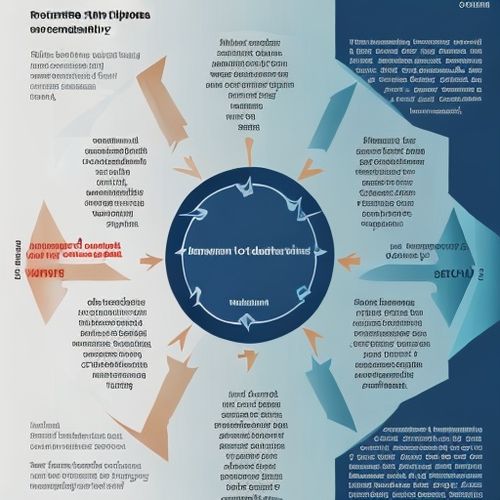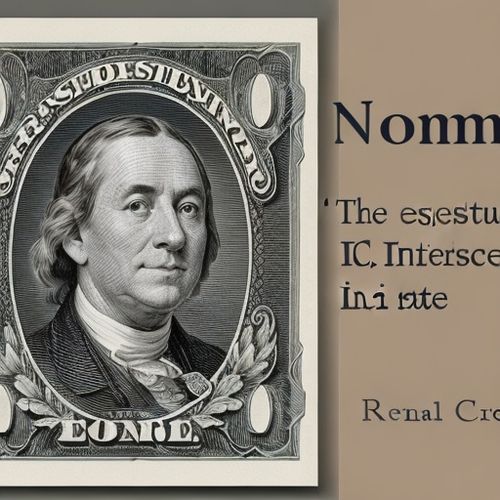In the ever-evolving landscape of finance, the concept of diversification remains a cornerstone of sound investment strategy. The idea is simple yet profound: spreading your investments across different asset classes, sectors, and geographies can help mitigate risk while potentially enhancing returns. However, building a truly diversified portfolio requires more than just randomly selecting a handful of stocks or funds. It demands a thoughtful approach that considers your financial goals, risk tolerance, and time horizon.
The foundation of any diversified portfolio begins with understanding your own financial situation. Before diving into the markets, investors must take stock of their current assets, liabilities, income streams, and future obligations. This personal financial audit serves as the bedrock upon which all investment decisions should be made. Without this clarity, even the most meticulously constructed portfolio may fail to align with your actual needs and aspirations. Many investors make the mistake of chasing returns without first establishing this fundamental understanding, often leading to disappointment when market conditions change.
Asset allocation represents the next critical step in portfolio construction. Traditional wisdom suggests dividing investments among stocks, bonds, and cash equivalents, with the precise mix depending on individual circumstances. Younger investors with longer time horizons might lean more heavily toward equities, which historically have offered higher returns over extended periods despite their volatility. Those approaching retirement may prefer the relative stability of bonds, though even conservative investors typically maintain some equity exposure to combat inflation's erosive effects. The key lies in finding the balance that allows you to sleep comfortably at night while still working toward your financial objectives.
Within each asset class, further diversification proves essential. For equity holdings, this means spreading investments across various sectors such as technology, healthcare, consumer goods, and energy. Different sectors often perform well at different stages of the economic cycle, so having exposure to multiple areas can smooth out returns over time. Similarly, considering companies of varying sizes—from large-cap multinationals to small, innovative firms—can provide additional diversification benefits. Geographic diversification also plays a crucial role, as economic conditions and growth prospects vary significantly across countries and regions.
The rise of alternative investments has expanded the diversification toolkit available to modern investors. Real estate, commodities, private equity, and even cryptocurrencies now feature in many sophisticated portfolios. These assets often exhibit low correlation with traditional stocks and bonds, meaning they may perform well when conventional investments struggle. However, alternatives typically come with higher fees, less liquidity, and greater complexity, making them more suitable for experienced investors with larger portfolios. As with all investment decisions, understanding the risks and characteristics of these assets proves paramount before committing capital.
Rebalancing stands as one of the most overlooked yet vital aspects of maintaining a diversified portfolio. Over time, market movements will inevitably alter your original asset allocation. Without periodic adjustments, you might find yourself unintentionally overexposed to certain risks. Rebalancing involves selling portions of outperforming assets and reinvesting the proceeds into underperforming ones, effectively forcing you to "buy low and sell high." While simple in concept, this discipline proves challenging in practice, as it requires going against emotional impulses to chase winners and abandon laggards.
The investment landscape continues to evolve, with new products and strategies emerging regularly. Exchange-traded funds (ETFs) have revolutionized portfolio construction by providing low-cost access to entire markets or sectors with a single transaction. Thematic investing has gained popularity, allowing investors to target specific trends like clean energy or artificial intelligence. Factor-based strategies that focus on characteristics like value, momentum, or quality offer additional diversification possibilities. Navigating these options requires both education and self-awareness, as the most sophisticated strategy means little if it doesn't align with your goals and temperament.
Building and maintaining a diversified portfolio represents an ongoing journey rather than a one-time event. Market conditions change, personal circumstances evolve, and new investment opportunities emerge. Regular reviews—perhaps quarterly or annually—help ensure your portfolio remains aligned with your objectives. While diversification cannot eliminate all investment risk, it remains the most reliable method most investors have for managing uncertainty while pursuing their financial aspirations. In the end, a well-constructed portfolio serves not just to grow wealth, but to provide peace of mind in an unpredictable world.

By Noah Bell/Apr 10, 2025

By Victoria Gonzalez/Apr 10, 2025

By John Smith/Apr 10, 2025

By Sarah Davis/Apr 10, 2025

By James Moore/Apr 10, 2025

By John Smith/Apr 10, 2025

By Ryan Martin/Apr 10, 2025

By Benjamin Evans/Apr 10, 2025

By Emma Thompson/Apr 10, 2025

By Megan Clark/Apr 10, 2025

By Thomas Roberts/Apr 10, 2025

By Noah Bell/Apr 10, 2025

By George Bailey/Apr 10, 2025

By Daniel Scott/Apr 10, 2025

By Benjamin Evans/Apr 10, 2025

By Amanda Phillips/Apr 10, 2025

By Sophia Lewis/Apr 10, 2025